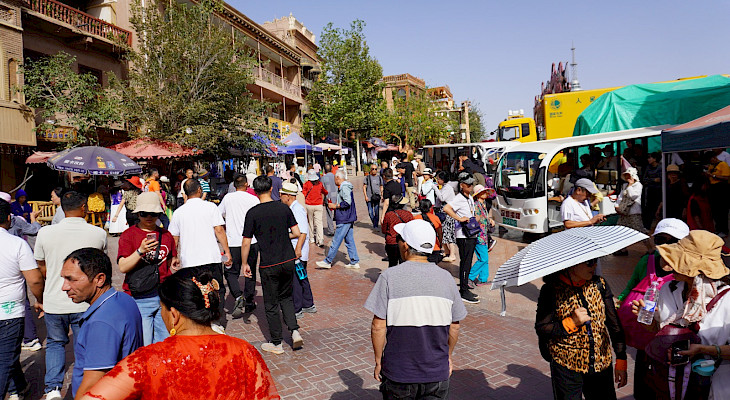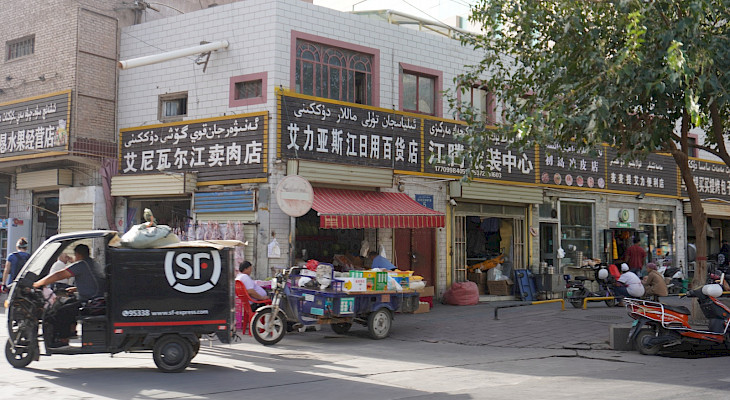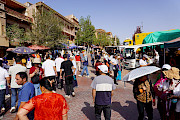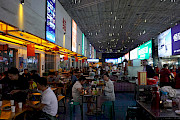After a seven-year break, last September I joined a small group of Chinese researchers in their visit of five cities in Xinjiang: Kashgar, Aksu, Kuche, Bayi, and Urumqi. The main purpose of the visit was to observe Uyghurs going about their lives and assess whether their lives are adversely affected by what western scholars and media claim to be excessive security measures and extensive restrictions on the use of the Uyghur language.
When it comes to security measures in Xinjiang, the Council on Foreign Relations states, “In some cities, such as western Xinjiang’s Kashgar, police checkpoints are found every one hundred yards or so.” Also, under the headline “The Police Region of Xinjiang: Checkpoints, Camps, and Fear,” the author declares, “An Uyghur I know was stopped 34 times one day.” The Uyghur Academy writes, “Each square has a police station that closely monitors inhabitants by regularly scanning their identification cards, taking their photographs and fingerprints, and searching their cell phones.” In addition, the New York Times’ piece “How China Uses High-Tech Surveillance to Subdue Minorities” affirms, “the online records indicate that a network of about 10,000 checkpoints in Urumqi made more than six million identifications in 24 hours.”
These statements about security checks in Xinjiang are either outdated or grossly inflated.
What struck me the most on our first day in Kashgar was the total absence of checkpoints and paramilitary patrols on the roads and streets, both of which were common at the time of my last visit to the region in 2016. After landing in Kashgar, we drove to our hotel downtown and went to one of Kashgar’s night markets. To my surprise, there were no checkpoints at all. In the following days, we crisscrossed the city and went to the countryside several times. Not a single time had we to go through a checkpoint or saw anyone having to do so, and police presence in general was minimal. We only spotted police presence in a park where there was a large congregation of people dancing. This absence of checkpoints continued for the whole 7-day trip to Kashgar, Aksu, Kuche and Urumqi, during which we did not see a single checkpoint.
At least in these four cities, there were no visible checkpoints and the police presence was minimal, indicating a normalization of the life in Xinjiang.

Another controversial issue discussed extensively in the western media is that the use of the Uyghur is very restricted in Xinjiang. The United Nations Human Rights assessment from August 31, 2022 finds that some Uyghurs and Kazakh “were not allowed to speak their own language.” Furthermore, the UHRP’s brief “Assault on the Uyghur Language in East Turkestan” states, “Official policies discourage speaking and writing in Uyghur in public” and “shops must clear the shelves of anything written in Uyghur script and Uyghur scrubbed from street signs and signboards.”
The first hint that made me question the validity of these statements was the fact that the announcements on the plane from Urumqi to Kashgar were in three languages: Mandarin, Uyghur, and English. After landing in Kashgar, most signs in the airport were in Uyghur too. Moreover, most Uyghurs talked to each other in Uyghur language. While driving from the airport to the city, we searched different programs on the radio and we found that approximately half of them were in Chinese and half in Uyghur. In the following days, we stayed in several hotels and the local TV programs were half in Chinese and half Uyghur too.
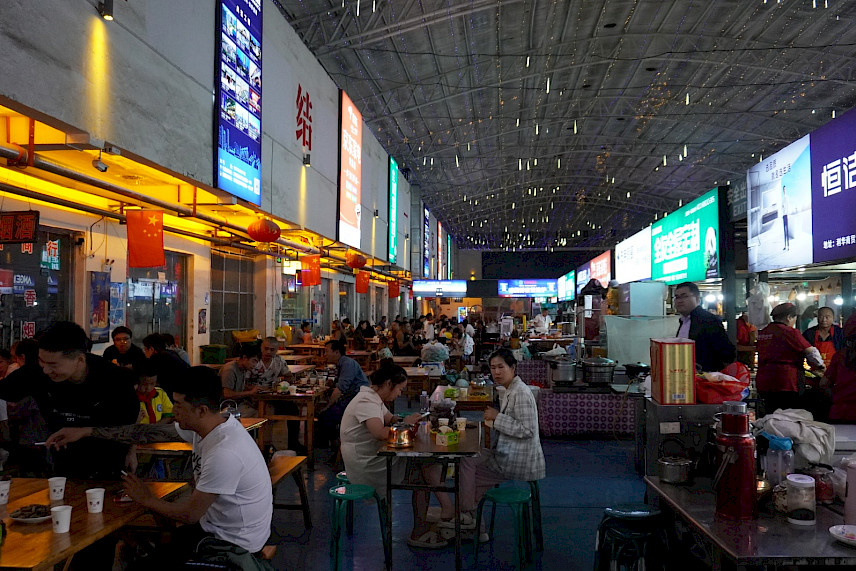
As for street and store signs, they were always written Chinese characters and, in most cases, in Uyghur too. The font of the Chinese characters was larger and sometimes the Uyghur script was not included or not illuminated at night. From the observations made over the 7-day trip, signs are always in Chinese and the Uyghur version can be added. In predominantly Uyghur areas, the Uyghur script was practically always present.
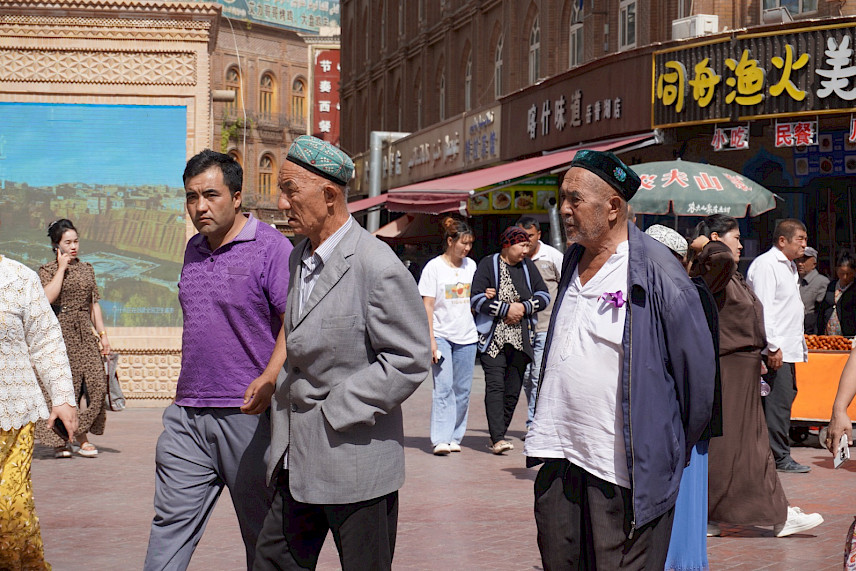
The use of the Uyghur language was common. Most Uyghurs talked to each other in Uyghur in the streets, restaurants, plane, and countryside. Uyghur children talked to each other in both Uyghur and Chinese. A significant number of Uyghurs we talked to had a very limited command of the Chinese language and two of them (30-40 years old) were unable to maintain a conversation in Chinese.
During our 7-day visit to Xinjiang, we observed that the general atmosphere in the streets was relaxed, which is a significant change compared to seven years ago, when interethnic tensions were obvious and extensive security measures were visible. After a long period of instability, life in the streets of Xinjiang is entering a new state of normalcy, albeit that it remains unexplained how a society has undergone such significant transformation over such short period.
Patrik K. Meyer holds a PhD in Politics and International Studies from the University of Cambridge and has conducted extensive research and published on the Uyghur issue. He currently is a visiting professor at Halic University in Istanbul and a Research Associate at the Centre on Conflict, Development and Peacebuilding. Graduate Institute Geneva.
The author kindly agreed to publish the article on this site.
All photos - Patrik Meyer
CentralasianLIGHT.org
January 12, 2024

